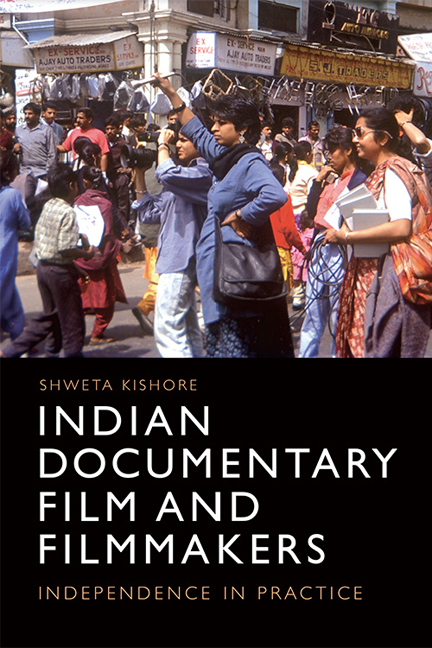4 - Circulation and Exhibition
Published online by Cambridge University Press: 24 April 2021
Summary
I would like my films to make a difference in the real world. I’m not content to make a film and let it sit idle or let it go only to some film festival or museum and be appreciated by a tiny fraction of well-to-do people. I want the films to be in the mainstream and do as much as I can to get into that mainstream, so that they have an impact in the real world. (Patwardhan 2013)
How might circulation regulate the visibility and perception of independent documentary film? Though possibly unusual, the question speaks to the constitutive role played by the structures and practices of circulation in the differentiation, classification and ordering of documentary film insofar as regulating its prominence and perception in the public domain is concerned. From a cultural point of view, the ‘specific social history’ and ‘social relationships’ of media forms, according to Raymond Williams, are critical to meaning-making, suggesting a materialist mode of analysis beyond the radical possibilities offered by subject matter or authorship (1977: 163). If cultural analysis and criticism are to take into account social history as constitutive of meaning, the dialectics of circulation become central to the discussions. Inasmuch as circulation itself is a product of ideology, it also produces ideologies through its mode of presentation and the meanings that it imparts or suppresses in works of art. In Contemporary Cultures of Display, Grunenberg (1999) provides potent insights into the ways that the exhibition of artworks and cultural forms is shaped through ideologies and also produces perceptual regimes and viewpoints that politicise the act of viewing. The dominant mode of art display, for instance – the modernist white cube of the modern art museum – conceals its ideological construction, a surface designed for ‘the apparent exclusion of all reference to the wider world beyond the domain of pure form’, writes Grunenberg (31). The subordination of the original context and content made possible by the white cube results in an ‘effacement’ of the struggles and religious, political and personal features particular to artworks and their contexts of production. This neutralisation of history transforms functional objects into museum objects of ‘aesthetic appreciation’ (31).
- Type
- Chapter
- Information
- Indian Documentary Film and FilmmakersIndependence in Practice, pp. 105 - 132Publisher: Edinburgh University PressPrint publication year: 2018



